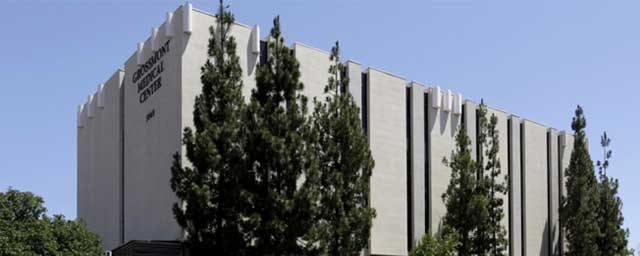Dr. Allsing has become an expert in the state-of-the-art Mako Robotic Arm Assisted Technology. He is the leading provider of this technology in San Diego County. He uses the Robot to deliver the most accurate, most reproducible total hip arthroplasty, or hip replacement, total knee arthroplasty, or knee replacement, and uni-compartmental knee arthroplasty, or partial knee replacement.
How Mako Technology Works
Mako Robotic-Arm Assisted Technology provides you with a personalized surgical plan based on your unique anatomy. First, a CT scan of the diseased hip or knee joint is taken. This CT scan is uploaded into the Mako System software, where a 3D model of your hip or knee will be created. This 3D model will be used to pre-plan and assist your surgeon in performing your knee replacement or hip replacement.
In the operating room, your surgeon follows the personalized surgical plan while preparing the bone for the implant. The Mako system guides your surgeon within the pre-defined area and helps prevent the surgeon from moving outside the planned boundaries. This helps to provide more accurate placement and alignment of your implant.1-3
- Mako Robotic-Arm Assisted partial knee replacement is a treatment option for adults living with early to mid-stage osteoarthritis (OA) that has not yet progressed to all three compartments of the knee. Depending on where the arthritis affects the knee, patients may have an implant inserted in any of the following areas:
Step 1. Knee CT Scan
Step 2. Knee Personalized Planning
- Mako Robotic-Arm Assisted total hip replacement is a surgical procedure intended for patients who suffer from non-inflammatory or inflammatory degenerative joint disease (DJD). Some forms of DJD include osteoarthritis (OA), post-traumatic arthritis, rheumatoid arthritis (RA), avascular necrosis (AVN) and hip dysplasia.

Step 1. Hip CT Scan
Step 2. Hip Personalized Planning
It’s important to understand that the surgery is performed by an orthopaedic surgeon, who guides the surgeon-controlled robotic-arm during the surgery to position the implant in the knee and hip joints. The Mako Robotic-Arm does not perform surgery, make decisions on its own, or move in any way without the surgeon guiding the robotic-arm. The Mako System also allows your surgeon to make adjustments to your plan during surgery as needed.
IMPORTANT INFORMATION
Hip & Knee Replacements
Hip joint replacement is intended for use in individuals with joint disease resulting from degenerative and rheumatoid arthritis, avascular necrosis, fracture of the neck of the femur or functional deformity of the hip. Knee joint replacement is intended for use in individuals with joint disease resulting from degenerative, rheumatoid and post-traumatic arthritis, and for moderate deformity of the knee.
Joint replacement surgery is not appropriate for patients with certain types of infections, any mental or neuromuscular disorder which would create an unacceptable risk of prosthesis instability, prosthesis fixation failure or complications in postoperative care, compromised bone stock, skeletal immaturity, severe instability of the joint, or excessive body weight.
Like any surgery, joint replacement surgery has serious risks which include, but are not limited to, pain, bone fracture, change in the treated leg length (hip), joint stiffness, hip joint fusion, amputation, peripheral neuropathies (nerve damage), circulatory compromise (including deep vein thrombosis (blood clots in the legs)), genitourinary disorders (including kidney failure), gastrointestinal disorders (including paralytic ileus (loss of intestinal digestive movement)), vascular disorders (including thrombus (blood clots), blood loss, or changes in blood pressure or heart rhythm), bronchopulmonary disorders (including emboli, stroke or pneumonia), heart attack, and death.
Implant related risks which may lead to a revision of the implant include dislocation, loosening, fracture, nerve damage, heterotopic bone formation (abnormal bone growth in tissue), wear of the implant, metal sensitivity, soft tissue imbalance, osteolysis (localized progressive bone loss), audible sounds during motion, and reaction to particle debris.
The information presented is for educational purposes only. Speak to your doctor to decide if joint replacement surgery is appropriate for you. Individual results vary and not all patients will return to the same activity level. The lifetime of any joint replacement is limited and depends on several factors like patient weight and activity level. Your doctor will counsel you about strategies to potentially prolong the lifetime of the device, including avoiding high-impact activities, such as running, as well as maintaining a healthy weight. It is important to closely follow your physician’s instructions regarding post-surgery activity, treatment and follow-up care. Ask your doctor if a joint replacement is right for you.
Stryker Corporation or its other divisions or other corporate affiliated entities own, use or have applied for the following trademarks or service marks: Mako, Stryker. All other trademarks are trademarks of their respected owners or holders.
References
- Nawabi DH, Conditt MA, Ranawat AS, Dunbar NJ, Jones J, Banks SA, Padgett DE. Haptically guided robotic technology in total hip arthroplasty – a cadaver investigation. Proc Inst Mech Eng H. 2013 Mar22 7(3):302-9
- Illgen R. Robotic assisted total hip arthroplasty improves accuracy and clinical outcome compared with manual technique. 44th Annual Advances in Arthroplasty Course. October 7-10, 2014, Cambridge, MA.F
- Anthony, Ian, Bell, Stuart W., Blyth, Mark, Jones, Bryn, MacLean, Angus, Rowe, Philip. Improved accuracy of component positioning with robotic-assisted unicompartmental knee arthroplasty. The Journal of Bone and Joint Surgery. Volume 98-A: Number 8. April 20, 2016. pp 627-35.
MKOHMT-PE-3_10832
Copyright © 2016 Stryker Corporation
Mako Robotic-Arm Assisted Total Hip Replacement



